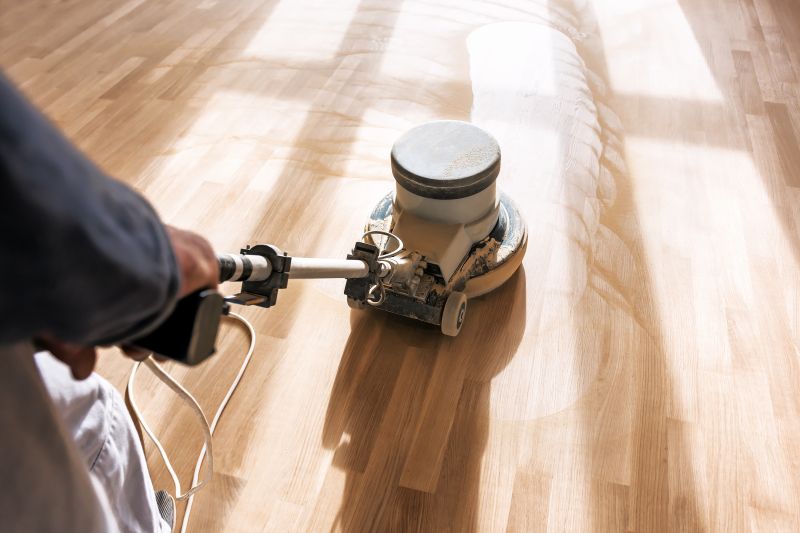Leading Products For Floor Sanding And Stainings To Transform Your Floors
Explore top-rated tools and supplies designed to help you achieve smooth, professional-looking floors with ease and efficiency.
 Floor sanding and staining are essential steps in restoring and enhancing the natural beauty of wooden surfaces. Whether working on hardwood floors or other wooden structures, selecting the right products can significantly influence the final appearance and durability of the finish. From abrasive tools to staining agents, a wide array of products is available to meet various project needs. Proper surface preparation through sanding ensures a smooth, even base, while appropriate stains can add richness and depth to the wood's natural grain. Finishing products such as sealers and topcoats help protect the surface from wear and tear over time.
Floor sanding and staining are essential steps in restoring and enhancing the natural beauty of wooden surfaces. Whether working on hardwood floors or other wooden structures, selecting the right products can significantly influence the final appearance and durability of the finish. From abrasive tools to staining agents, a wide array of products is available to meet various project needs. Proper surface preparation through sanding ensures a smooth, even base, while appropriate stains can add richness and depth to the wood's natural grain. Finishing products such as sealers and topcoats help protect the surface from wear and tear over time.
Top Overall Option
Comprehensive Floor Sanding and Staining Kit
A versatile and inclusive kit that provides a range of abrasive tools, stains, and finishes designed for various wood types and project sizes. It offers detailed instructions and high-quality components to facilitate a smooth sanding process and even staining application, making it suitable for both DIY enthusiasts and professionals seeking reliable results.
Types of Products For Floor Sanding And Stainings
Orbital Sanders
Electric sanders that move in a circular motion, ideal for fine finishing and surface preparation.
Belt Sanders
Powerful tools suitable for rapid removal of old finishes and leveling uneven surfaces.
Detail Sanders
Compact devices perfect for edges, corners, and intricate areas that require precision.
Hand Sanding Blocks
Manual tools for detailed work and small areas where power tools may be cumbersome.
Abrasive Sandpaper Rolls
Versatile abrasive sheets available in various grits for different stages of sanding.
Oil-Based Stains
Penetrate deep into wood, enhancing grain and offering rich coloration.
Water-Based Stains
Quick-drying options that produce clear, consistent color with less odor.
Gel Stains
Thick formulations that allow for easy application on vertical surfaces and prevent drips.
Polyurethane Finishes
Protective topcoats available in gloss, semi-gloss, and satin finishes for durability.
Varnishes
Clear coatings that provide a hard, protective surface with a traditional appearance.
Lacquers
Fast-drying finishes that offer a smooth, glossy surface ideal for high-traffic areas.
Wood Sealers
Preparatory coatings that help stabilize the wood surface before staining.
Brushes and Applicators
Various brushes, rollers, and applicators designed for even stain and finish application.
Floor Edging Tools
Specialized tools to reach tight corners and along edges for a professional finish.
Dust Collection Attachments
Accessories that connect to power sanders to minimize airborne dust during sanding.
Popular Choices
Widely used for smooth surface preparation and finishing in various projects.
Favored for removing old finishes and leveling large areas efficiently.
Common for detailed work and touch-ups in tight spaces.
Popular for deep, rich color enhancement and grain highlighting.
Chosen for quick drying and minimal odor, suitable for indoor projects.
Frequently selected for their protective qualities and finish options.
Commonly used for creating durable, glossy surfaces on wooden floors.
Preferred for fast-drying, high-gloss finishes in professional settings.
Various grits are popular for progressing through different sanding stages.
Essential for achieving a clean finish along edges and corners.
Increasingly used to reduce mess and improve air quality during sanding.
When undertaking a floor refinishing project, understanding the different types of sanding equipment is crucial. Hand-held sanders, orbital sanders, and drum sanders each serve specific purposes, ranging from detailed edge work to large surface coverage. Alongside sanding tools, staining products come in numerous formulations, including oil-based, water-based, and gel stains, each offering different application experiences and aesthetic results. Proper application techniques and compatible finishing products can help achieve a professional-looking outcome.
Choosing the right products involves considering the type of wood, the condition of the surface, and the desired visual effect. For staining, color options vary widely, allowing customization to match interior decor or personal preferences. After staining, applying a clear protective finish such as polyurethane, varnish, or lacquer can enhance durability and appearance. It's important to select products that are compatible with each other to ensure proper adhesion and longevity. Overall, a comprehensive understanding of these products can help users make informed choices for successful floor sanding and staining projects.
Key Buying Considerations
- Type of wood and its hardness to select appropriate abrasives and stains.
- Project size and whether power tools or manual tools are more suitable.
- Desired finish appearance, such as matte, semi-gloss, or high-gloss.
- Compatibility of stains and finishes with the existing or new wood surface.
- Drying and curing times for stains and sealers to plan project timelines.
- Ease of application, including brush, roller, or spray options.
- Level of surface preparation required before staining or sealing.
- Durability and protective qualities needed for high-traffic areas.
- Environmental conditions like humidity and temperature during application.
- Availability of replacement parts and accessories for tools.
- Budget constraints and cost-effectiveness of product options.
- User safety features, such as low odor or low VOC formulations.
- Ease of cleanup after application, including solvent or water cleanup options.
- Brand reputation and user reviews for product reliability.
- Storage requirements and shelf life of products.
This page contains affiliate links. We may earn a commission if you make a purchase through these links, at no additional cost to you.
